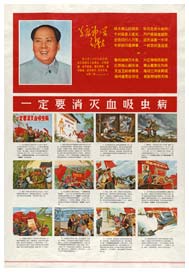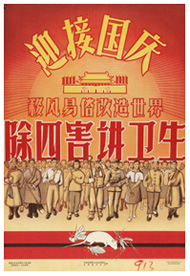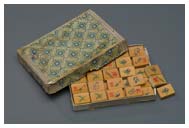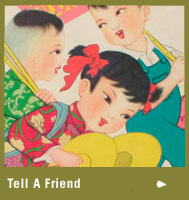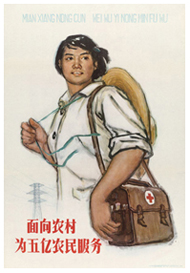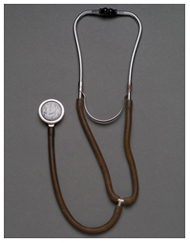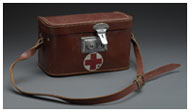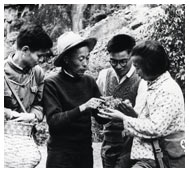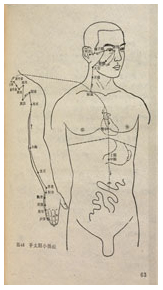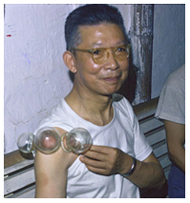To provide health care in rural areas, in 1965 the Chinese government began training thousands of young people to treat common ailments. These medical workers, known as barefoot doctors, spent half the working day providing health care and the rest of the time farming as they had done before. By the 1970s, over one million people had been trained. Although private medicine has since replaced the barefoot doctors, the low cost and wide distribution of health care they made possible has never been matched.
Health campaigns built on the idea that citizens had a responsibility to help one another and that great advances could be made by working together. This poster features people of different
ethnicities to inspire everyone to get involved.
One of the largest campaigns targeted the "four pests"—rats, flies, mosquitoes and grain-eating sparrows. With almost three-quarters of the population unable to read or write, to be effective
these health education campaigns needed to provide critical information in an easily understandable format.
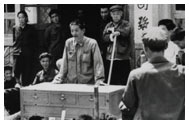 The launch of a patriotic health campaign, China, 1970s
The launch of a patriotic health campaign, China, 1970sCourtesy WHO/Ministry of Public Health China
In 1949, the Chinese Communists defeated the Nationalist forces and founded the People's Republic of China. After years of civil war, health conditions in the country were poor.
The government launched "Great Patriotic Health Campaigns" to teach communities how to prevent common illnesses. In villages throughout the country, citizens learned about hygiene
and how to eradicate disease-carrying pests such as snails and mosquitoes.
Although patriotic health campaigns were successful, most people had no access to a physician when they needed medical treatment. Living in the countryside, far from fully-equipped medical
facilities, the nearest health care center could be a three-day walk away. In June 1965, Mao Zedong, the Chairman of the Communist Party, called for young men and women to train as barefoot
doctors to deliver health care wherever it was needed.
In the 1960s, Ying Lowrey met a medical student who taught her acupuncture. She was fascinated by the technique and decided to learn more. In 1966, Lowrey became a barefoot doctor, based in
the Chinese countryside. After more than four years she moved to Tibet to continue this work.
Lowrey considered this stethoscope and training manual her two most important pieces of equipment. She used them daily and was prepared for a wide range of situations. Patients with lung
infections, parents with sick children, and workers injured in the fields called on her for help.
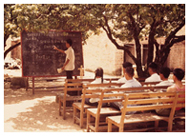 Students studying to become barefoot doctors, Xinhua commune, China, 1972
Students studying to become barefoot doctors, Xinhua commune, China, 1972Courtesy Jeoffry B. Gordon, M.D., M.P.H.
The people who were chosen by their communities to become barefoot doctors spent between one and four months studying anatomy, bacteriology, disease diagnosis, acupuncture, family planning,
maternal and infant care, and traditional and Western medicines with teams of medical staff. All received a barefoot doctor's manual—a comprehensive guide to the many health issues they were
trained to treat.
Barefoot doctors learned how to deal with a wide variety of illnesses and injuries, using both traditional Chinese methods such as acupuncture as well as Western treatments. Patients with very
serious conditions or who needed specialized care would be referred to doctors at larger health centers.
The people who were chosen by their communities to become barefoot doctors spent between one and four months studying anatomy, bacteriology, disease diagnosis, acupuncture, family planning,
maternal and infant care, and traditional and Western medicines with teams of medical staff. All received a barefoot doctor's manual—a comprehensive guide to the many health issues they were
trained to treat.
Patients were treated in sparsely furnished health stations, located within easy walking distance of peasants' homes. Barefoot doctors also visited workers out in the fields, and prescribed a
wide variety of medicines including many made from locally-grown herbs.
